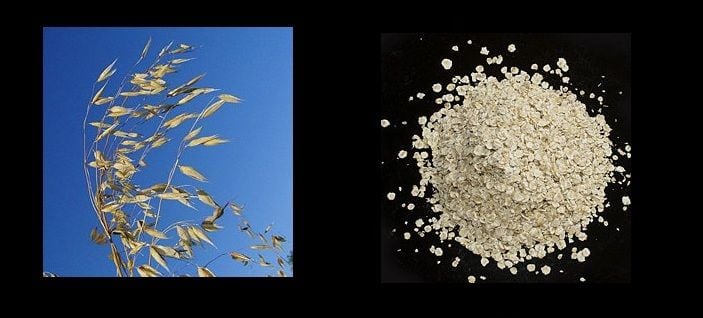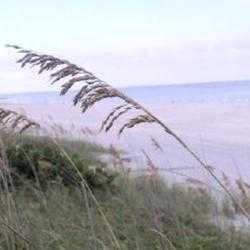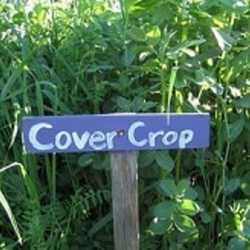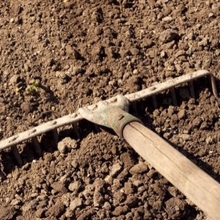Unless it's a chewy, buttery oatmeal cookie hot out of the oven with a glass of cold milk.
Oatmeal is one of those staples that most of us take for granted. It’s in everyone’s cupboard and has more uses than just breakfast cereal. However, the history of oats as a cultivated crop goes back hundreds of years to around the beginning of the Christian era. Grown extensively in Europe, the seeds eventually made their way to the New World and, today, oats are the third most important grain grown in the United States.1 But 95% of this crop is used for livestock feed, not human food.
Avena spp. is of the family Gramineae and contains thirteen species and subspecies, according to the U.S. Department of Agriculture.2 The Common Oat or Tree Oat (A. sativa) is the most important of the U.S. cultivated oats and includes varieties with a spring or winter harvest time. Other species grown in North America include:
Large Naked Oat or Hull-less Oat (A. nuda) - limited cultivation
Red Oat (A. byzantina) - southern U.S.
Slender Oat (A. barbata) - not commercial, but used as range grass in California
Common Oat or Tree Oat (A. sativa) - grown commercially in some parts of the U.S.
Side Oat or Common Side Oat (A. sativa L. subsp. orientalis Schreb.) - spring type; 18 varieties; limited cultivation
Wild Oat (A. fatua) - naturalized and considered a weed in northern states and Canada; has some value for hay or pasture grass
Species not cultivated in North America include:
Small Naked Oat (A. nudibrevis)
Wild Red Oat (A. sterilis) - naturalized in U.S., but not cultivated
Desert Oat (A. wiestii) - native to eastern Mediterranean area
Sand Oat (A. strigosa) - widely distributed in Europe; naturalized in California
Abyssinian Oat (A. abyssinica) - Abyssinia
Oat plants are annual grasses of two general habits: spring planting with harvest in late summer, or fall planting with harvest in midsummer. Where temperatures are mild in the winter, oats are planted in the fall; northern and elevated regions plant oats in the spring. According to the Quaker Oats Company, oat crops require less fertilizer, and provide dense soil coverage that reduces erosion and crowds out weeds.3
Speaking of Quaker Oats, that company has been producing oat products with the familiar man in Quaker garb since 1877. The distinctive round container was introduced in 1915 and has been modified only slightly since then.
Besides breakfast cereal, what other uses do oats provide?
Nutrition-wise, oats contain several vitamins and minerals, plus significant quantities of soluble fiber which can help lower cholesterol.3 Regular oatmeal contains no salt, fat, or cholesterol, and is an excellent source of fiber. Oats are a good source of nutrition for horses, dairy cattle, and poultry (the oat hulls are turned into poultry mash). Oat straw is an important supplementary feed on many farms, and fall-sown oats provide winter livestock grazing for temperate regions.1
Oats can be milled into flour, or packaged as oat bran. Oats come in many forms: rolled (the oats are steamed, rolled, re-steamed, then roasted), steel-cut, also known as coarse-cut, pinhead, or Irish oats (whole grain cut into two or three pieces by steel), quick cooking (whole grain cut into small pieces before being steamed and rolled), and instant (precooked and dried). Oats lend themselves to many recipes.
So how do oats get from THIS to THIS?

Raw oats go through several processes before they reach our tables. After cleaning the oats to remove chaff, weeds, stones, or other grains, the oats are sized, then put into a machine which tumbles the grains to remove the hull from the groat (kernal). Air pumps out the loose hulls and the remaining groats are scoured.
The groats are heated to 215˚F to break down the fat to free fatty acids which would turn rancid within four days. This is called stabilization and serves a further purpose of making the oats taste nutty.4
From that point on, the final processing determines the type of oat product, whether cereal grain or flour or bran.
So whether you like your oatmeal with e-mail, or raw with yogurt or nestled in cookies, be assured that oats are one of the best things you can do for yourself!
1 “Oats”. Purdue University Center for New Crops & Plants Products. http://www.hort.purdue.edu/newcrop/crops/oats.html, 1999
2 USDA Technical Bulletin 1100, Stanton. “Oat Identification and Classification”
3 “Growing Our Oat”, Quaker Oat Company, http://www.quakeroats.com
4 Nair, Sonya. “How Oats are Processed”, Buzzle.com
CREDITS
Oat plant courtesy of PlantFiles
Dry oat heads: photo by H. Zell, Wikimedia GNU Free documentation License
Processed oats: photo by Bill Ebbesen, copyright free through Wikimedia Commons, all uses
Quaker Oats advertisement: public domain, expired copyright, via Wikimedia Commons
Dry oat heads 2: photo by Josef Stieranka, Wikimedia Creative Commons Attribution Share Alike 2.0 Generic license


















